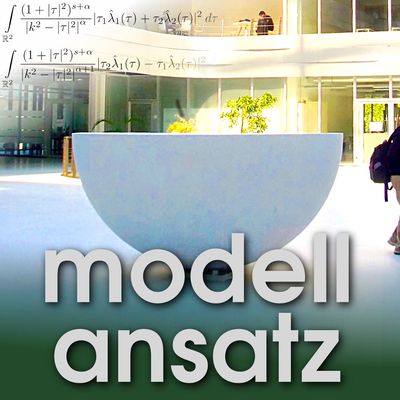Bei genauem Hinsehen finden wir die Naturwissenschaft und besonders Mathematik überall in unserem Leben, vom Wasserhahn über die automatischen Temporegelungen an Autobahnen, in der Medizintechnik bis hin zum Mobiltelefon. Woran die Forscher, Absolventen und Lehrenden in Karlsruhe gerade tüfteln, erfahren wir hier aus erster Hand.
http://modellansatz.de/
Splitting Waves
To separate one single instrument from the acoustic sound of a whole orchestra- just by knowing its exact position- gives a good idea of the concept of wave splitting, the research topic of Marie Kray. Interestingly, an approach for solving this problem was found by the investigation of side-effects of absorbing boundary conditions (ABC) for time-dependent wave problems- the perfectly matched layers are an important example for ABCs.
Marie Kray works in the Numerical Analysis group of Prof. Grote in Mathematical Department of the University of Basel. She did her PhD 2012 in the Laboratoire Jacques-Louis Lions in Paris and got her professional education in Strasbourg and Orsay.
Since boundaries occur at the surface of volumes, the boundary manifold has one spatial dimension less than the actual regarded physical domain. Therefore, the treatment of normal derivatives as in the Neumann boundary condition needs special care.
The implicit Crank-Nicolson method turned out to be a good numerical scheme for integrating the time derivative, and an upwinding scheme solved the discretized hyperbolic problem for the space dimension.
An alternative approach to separate the signals from several point sources or scatterers is to apply global integral boundary conditions and to assume a time-harmonic representation.
The presented methods have important applications in medical imaging: A wide range of methods work well for single scatterers, but Tumors often tend to spread to several places. This serverely impedes inverse problem reconstruction methods such as the TRAC method, but the separation of waves enhances the use of these methods on problems with several scatterers.
Literature and additional material- F. Assous, M. Kray, F. Nataf, E. Turkel: Time-reversed absorbing condition: application to inverse problems, Inverse Problems, 27(6), 065003, 2011.
- F. Assous, M. Kray, F. Nataf: Time reversal techniques for multitarget identification, in Ultrasonics Symposium (IUS), IEEE International (pp. 143-145). IEEE, 2013.
- M. Grote, M. Kray, F. Nataf, F. Assous: Wave splitting for time-dependent scattered field separation, Comptes Rendus Mathematique, 353(6), 523-527, 2015.
